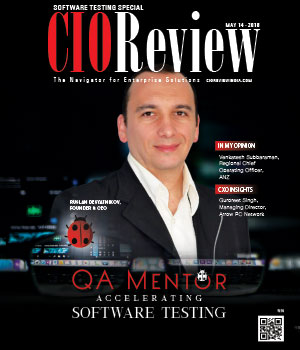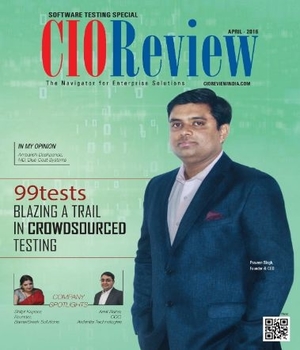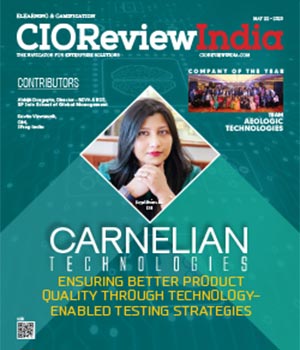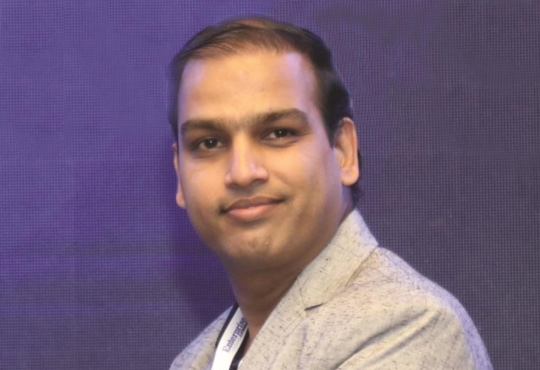
Digital Experience Monitoring With Continuous Performance Mandatory For Digital Business
Arun Kumar Dutta, Senior Test Manager & Global Subdomain Leader for Application:Testing, Atos | Tuesday, 03 September 2019, 07:14 IST
 Introduction:
Introduction:
Nowadays, all organizations are moving towards digital transformation. Digital transformation assists in increased capabilities, customer coverage, flexibilities and agilities. To make this successful, companies should leverage the concepts of Digital Experience Monitoring (DEM). Customer experience plays a crucial role for digital business and this can be monitored E2E using DEM. DEM also assists to find valuable performance insights in application performance data. To be successful in digital business, it is very much expected to be proactive in detecting performance problems rather than finding problem once it occurs. Though traditionally, an application’s speed, scalability, stability and availability is now not correct standard to measure effectiveness of digital applications; however, these are primary things for customer experience.
On the other hand, organizations are now concerned about increasing the rate of changes in market where they not only need to compete but also familiarize with speed of change to adapt time-to-market pressures. Organizations need to ensure improved performance with new or enhanced features almost every time to satisfy the end-users. Overall, to meet digital customer expectations, continuous performance is now compulsory every time applications go live.
Gartner issued some cautionary advice in Innovation Insight for DEM report- “IT leaders that do not invest in DEM run the risk of becoming increasingly irrelevant as their skills and tooling fail to keep up with exponentially growing operational complexity and increasing demand for proactive personal and dynamic services.”
In a nutshell, continuous performance with DEM is now mandatory for surviving in digital business.
DEM for surviving in Digital Business:
A Gartner report says that “By 2020, 30 percent of global enterprises will have strategically implemented DEM technologies or services, up from fewer than 5 percent today.”
DEM is a comprehensive experience monitoring of both digital agents-human and machine, and supports both Real User Monitoring (RUM) and Synthetic Monitoring (SM). DEM isan extended version of Application Performance Monitoring (APM) and End User Experience Monitoring (EUEM). DEM also monitors the impact of social feelings on how an individual user perceives the quality of an application’s performance.
RUM is a passive monitoring technology that records all user interactions with a website or a desktop client or thorough mobile-API interacting with web servers, application servers, database servers or from cloud-based servers. Monitoring actual end-user communication is important to decide if they are being serviced speedily and without any issues. For any issue, the necessary actions need to be taken at earliest to be resolved.
SM is an active monitoring technology that is scripted well in advance to cover all possibilities of navigational paths that an end-user might take. This is important as it identifies problems, slowness and any downtime experiences well in advance. Together, RUM and SM can provide deeper visibility into an E2E application’s performance, regardless of where they are running
A malfunction in system means revenue loss, hours of productivity loss and overall damage of brand. Implementing a DEM strategy with continuous performance enables organizations to deliver amazing digital experiences.
Customer Experience - Crucial for Digital Business:
Customer experience is about knowing customers in great detail so that organizations can create and deliver personalized experiences which will induce them to not only remain loyal but also convert others. To gain thorough knowledge about customers, organizations need to gather all the information from all touch points and channels, both, internally and externally to the organization. Then dig out valuable customer information with speed and precision. For successful customer experience management, organizations need to have the right information at the right place and the right time (and every time) with personalizes interactions.
DEM monitors, analyzes and optimizes customer experiences with an enhanced 360-degree view of every single user journey. Any satisfied end-user can be unsatisfied with 2 to 5 seconds delay- so the organization always needs to be attentive. Delivering superior customer experiences, while leveraging a variety of components of the digital ecosystem is considered as a success. When organizations will be more digitally matured and lot of digital devices will be online, overall user experiences will be stressed. Also, ensuring each application component delivers optimum performance will be more difficult. DEM will potentially identify that well in advance.
Bad customer experience spread like wildfire and can damage the brand of any organizations. Overall, continuous performance testing with DEM will confirm better customer experiences.
Continuous Performance: Being Agile for Digital Business:
Organizations are now under tremendous pressure to assure improved performance with new or enhanced features with almost every release. Continuous performance testing eliminates the potential risk of new performance issues and gives confidence ahead of deployment. It resolves time to market pressure, avoid big loss and reduce overall cost. Being agile is crucial to survive in a digital market. To meet digital customer expectations, continuous performance is now mandatory every time an application goes live, i.e., after each sprint (agile) cycle.
DEM with Continuous Performance for Digital Business:
Overall, continuous performance with DEM is now compulsory for surviving in a digital business for enhanced customer experience. Below are few things to follow:
• Consider both Digital Agents-human and machine as endpoint users.
• The need to follow both shift-left and shift-right performance testing-start early in SDLC and continue even after deployment.
• Continuously monitor end-user experience-both RUM & SM.
• Performance environment should be exactly similar with production not only in terms of size or hardware but also for system configuration details etc. for accurate results to compare with SLA.
• Data size should be 100 percent equivalent to production in performance environment for precise and accurate results.
• Consider real-life conditions like network latency, bandwidths etc. and prepare well in advance for the worst/extreme conditions in terms of user load, transactional frequency, server anomalies, fail over, batches, concurrent jobs, interfaces etc. Simulate those in performance test environments to avoid late surprises.
• Think about different geographic location endpoint users for real user simulation.
• Analyze production log data continuously to get a good understanding of business-critical scenarios, transactions, workload details and updates regularly.
• Performance testing needs to be carried out for all deployments, even a small change can create big performance issue.
• Application performance needs to be given maximum importance for superior customer experience.
• Continuously validate an application’s performance, analyze and tune. Iterative round of executions will endorse overall performance objectives.
• Collaboration confirms true continuous performance testing.Everyone-application owner, stakeholders, interfaces team, developer, tester, operational team need to work as team for successful digital business. Need to build a culture inside organization.
CIO Viewpoint
Big Data and the Big Opportunities
By Bipin Kumar, Head - IT & Projection at Cinèpolis India
By Vineet Bhardwaj, Head IT, Godrej Properties Limited
How Ai Can Drive Socio-Economic Transformation
By Sourabh Tiwari, CIO, Overseas Infrastructure Alliance (India) Pvt. Ltd
CXO Insights
Redefining Ransomware Protection with Cyber...
By Richa Singh
Five Trends In The Role Of Regulators In...
By Jaya Vaidhyanathan, President, Bahwan CyberTek
Testing Is Now More About Defect Prevention...


.jpg)







